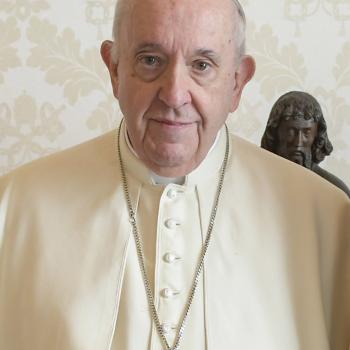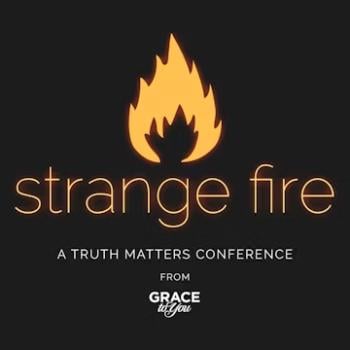Farewell Post
I’m calling it quits. Not because I’m discontent. I’m proud to have been part of the Anxious Bench and its steady stream of smart, prophetic, compassionate, and really interesting posts. I am, though, a bit weary of writing posts—hundreds of them after twelve years. I also need to finish a couple of books. In the tradition of those who have left before me, my final post is a self-indulgent review of my time here.
Way back in 2013, Tommy Kidd asked me to join a roster that included John Fea, John Turner, Miles Mullin, and Philip Jenkins. I had just published my first book Moral Minority: The Evangelical Left in an Age of Conservatism, and I presume the invitation was intended to give some political and chronological balance to a blog that leaned toward the study of conservative evangelicals in the eighteenth century.

Indeed, my posts in those early years took up the exploits and travails of the evangelical left. Five years earlier I had begun researching the rise and fall of these theologically conservative but politically moderate and progressive evangelicals for my dissertation at the University of Notre Dame. Many of my earliest posts in the 2010s covered the activities of key personalities: “Richard Mouw: Not Young, Not Very Restless, Amiably Reformed” and “The Radical Jim Wallis” and “Ron Sider: Pioneer of the Evangelical Left.” More recently—and sadly—I’ve covered many of their deaths: “My Friend the Enemy: Bill Pannell and the White Evangelical” and “Rene Padilla: Enfant Terrible.”
A prominent concern for these progressive evangelicals was race. And so as Black Lives Matter took shape, I sought to add historical perspective to the emergence of protests in evangelical spaces in posts like “All the Order for Us and All the Law for Them” and “How a Globe-Trotting Black Preacher Helped Integrate Billy Graham’s Crusades” and “When Beloved Community Doesn’t Work” and “Intervarsity and #BlackLivesMatter in Historical Perspective” and “Joe Brown, Joe Brown, He’s a Mean White Man: Southern Baptist Seminary and the Convict-Lease System” and “Walter Kim, the NAE, and Evangelical Leaders of Color.”
The emergence of Donald Trump in 2016—and many evangelicals’ allegiance to this disrupter—also occupied my attention. It also changed my perspective. Moral Minority had argued that evangelicalism is quite diverse—and that under different political and cultural circumstances in the 1960s and 1970s, the evangelical left could have been a path taken by many more. Trump’s decisive takeover of evangelical politics, however, made the evangelical left seem even more aberrant than I had depicted it in Moral Minority. In a 2021 post “Innocent Readings of Evangelical History,” I wondered whether I—and others—had cherry-picked examples of nineteenth-century social reform in an attempt to rehabilitate evangelicalism. Indeed, I acknowledged that there were always more patriarchs than feminists, always more enslavers than Grimké sisters. Abolitionists represented a usable history more than a representative one.
Meanwhile, I continued work on my second book. One of my favorite chapters in Moral Minority—“Samuel Escobar and the Global Reflex”—dealt with international sources of the evangelical left, and I wanted to expand study of that phenomenon idea to issues of sexuality, the supernatural, human rights, and social justice. So I spent the second half of the 2010s writing posts that anticipated the 2020 publication of Facing West: American Evangelicals in an Age of World Christianity. They included “The 2020 Census, Immigration, and the Future of American Evangelicalism” and “The Latinization of Latin American Mission” and “Elisabeth Elliot, Missionary Rebel” and “Filipino Evangelicals and People Power” and “Yun Ch’iho Meets Jim Crow.”
One of my favorite chapters in Facing West was “Chiang Mai 2017: A Campaign against Human Trafficking.” The American evangelical antitrafficking movement in Southeast Asia deserved a much fuller treatment than that single chapter, and so Lisa Weaver Swartz and I began taking frequent trips to Thailand and Cambodia to talk with hundreds of people—humanitarian workers, pastors, government officials, sex labor unionists, police officers—associated with that movement. We processed many of our findings here at the Anxious Bench. Posts included “A Farang Scholar in Thailand” and “This Thai Is Not Like the Others” and “Princesses and Policemen: Gendered Discourses of Human Trafficking.”
Then the pandemic happened. It stopped research in Southeast Asia—and more firmly grounded me in my home of Jessamine County, Kentucky. As I began work on a local history of Civil War memory, more of my posts dealt with local politics and culture. In “When Baptists Believed in the Bible—and Bourbon,” I contemplated the birth of Kentucky’s signature drink in the Bible Belt. In “The Signs of Wilmore, Kentucky: A Photo Essay,” Lisa Weaver Swartz and I documented signage of the 2020 election. In “Quail and Confections: Lessons in Political Civility from Kentucky,” I told a story of hospitality between rival political factions in 1888. In “Why Kids in Kentucky Didn’t Dress Up as Pilgrims after the Civil War,” I describe how southerners dismissed Thanksgiving holiday as the invention of pharisaical Yankees. In “Rebel on Main,” I introduced my seven-episode narrative podcast on the Confederate statue that sits on our courthouse yard.
Throughout my entire tenure at the Anxious Bench, I wrote a lot of words on my own identity as a Mennonite. In addition to a series I called Unexpected Sites of Christian Pacifism—featuring posts on John Wimber, Pentecostals, holiness groups, Charles Spurgeon, John Wesley, and Rand Paul (from whom I got a hand-written note after his staffers sound it online)—I wrote about “Anabaptism Turning 500,” trainings Christian Peacemaker Teams offered in Charlottesville in 2017 in “A Highly Trained Nonviolent Peacekeeping Force,” a trip our family took to Europe in “Rome to Rotterdam: The Weaver-Swartzes Go on Pilgrimage,” and the tragic anniversary of The Politics of Jesus. Other posts included “Who Would Jesus Bomb?” “The Danger of a Single Mennonite Story,” “The Mennonite Game and Whiteness,” Ron Sider’s Anabaptist activism in “Evangelizing the Evangelicals,” “The Amish Farmer and the Pietist Prince,” and “Hey White Evangelicals, Welcome to Anabaptism” after the election of Trump in 2016.
All along, I posted about what it was like to work in Christian higher education. I wrote about the politics of commencements. Because I teach at Asbury, I learned a lot about John Wesley and revivalism. I thought about how to teach better and how libraries are organized in “Serendipity in the Stacks: A Case against Bookless Libraries.”
I posted a lot about books I was reading. Many were academic, like The Bible Told Them So by Rusty Hawkins, An Infinite Fountain of Light by George Marsden, Altar Call in Europe by Uta Balbier, The Myth of Colorblind Christians by Jesse Curtis, God’s Law and Order by Aaron Griffith, Christian Globalism at Home: Child Sponsorship in the United States by Hillary Kaell, Brown Church by Robert Chao Romero, Good News to All Nations by Lauren Turek, Anointed with Oil by Darren Dochuk, Awakening the Evangelical Mind by Owen Strachan, and many others.
But not all. I also posted on books I read for fun, including Death Comes for the Archbishop by Willa Cather, Spirits Eat Ripe Papaya by Bill Svelmoe, and Educated by Tara Westover (which might be my most-read post of all time).
Finally, lots of posts dealt with everyday life. In “How More Religion Could Help Us Sleep Better,” I discussed the premodern practice of “second sleep.” I wrote about television shows I was watching, monitored developments at my alma mater, and mused about holidays I was celebrating.
I’ll close by saying how grateful I am to have had a space to think and write out loud. And how excited I am that Alex Mayfield, my colleague in Asbury University’s history program, will be taking over my Wednesday slot. I know you’ll enjoy his posts on East Asian history, Pentecostalism, and the digital humanities. Farewell!

















